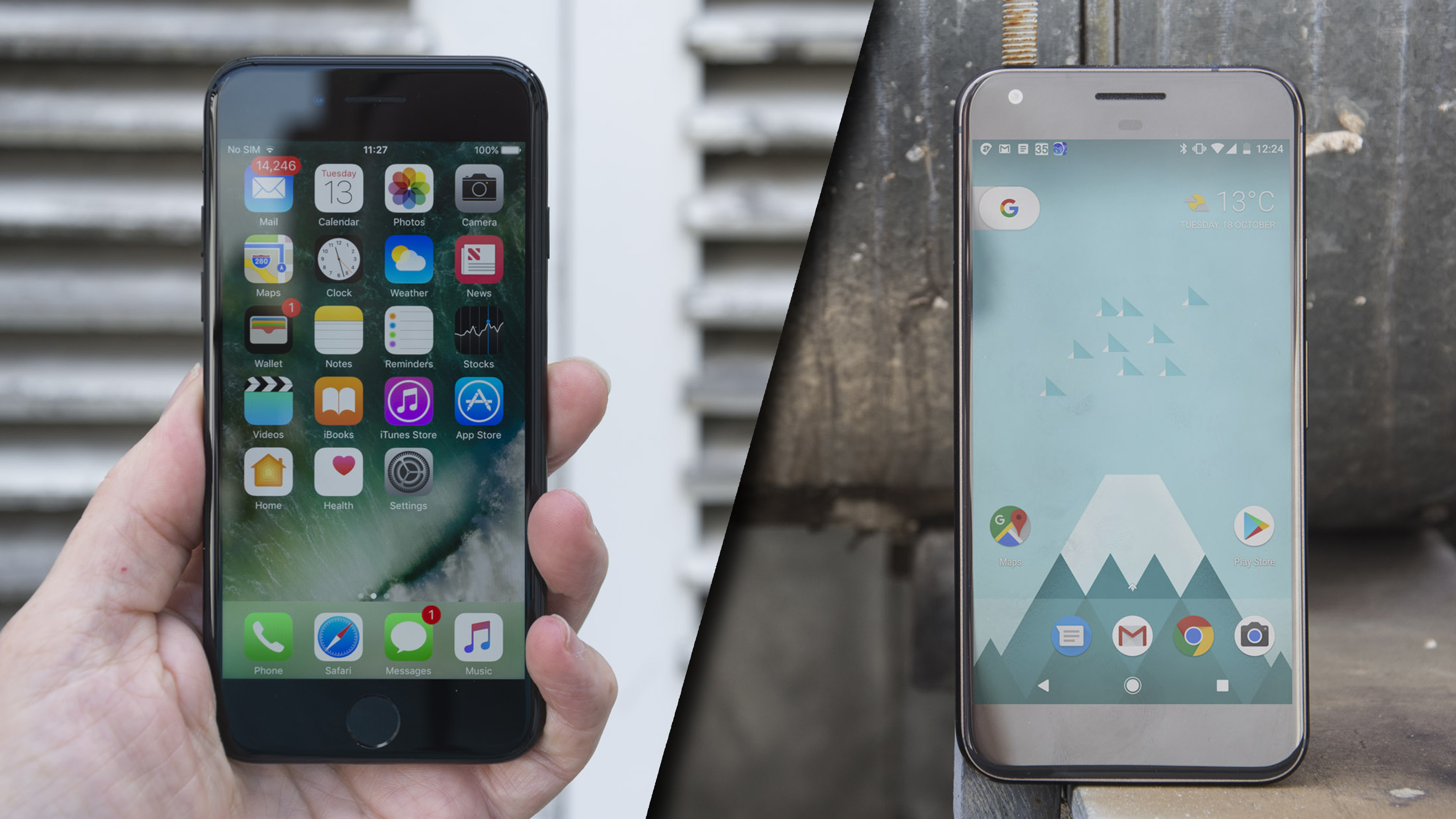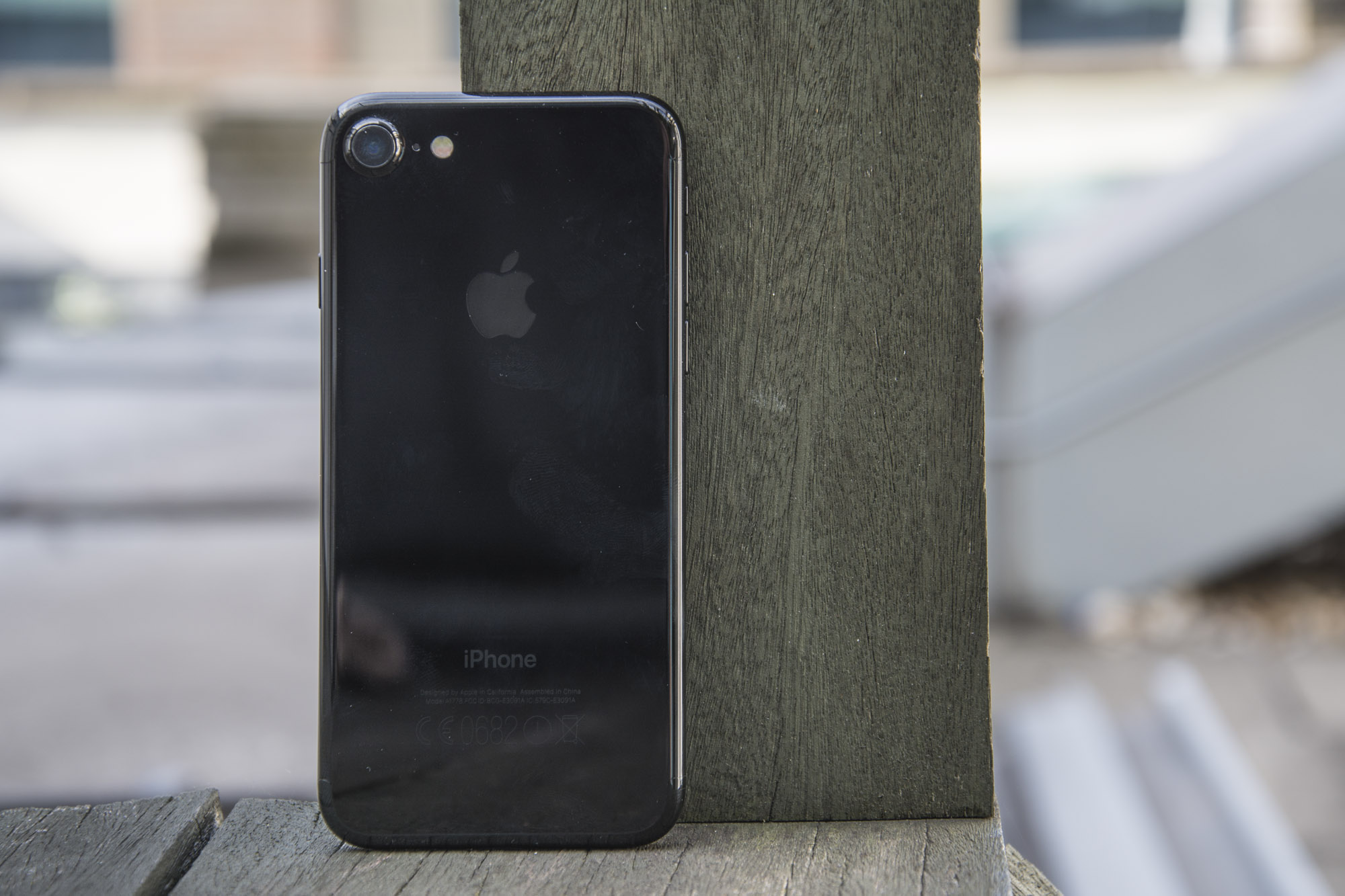iPhone 7 vs Google Pixel: Can Google beat the iPhone at its own game?
Will the Pixel be able to take on the mighty iPhone?


After years of farming the production of its first-party Nexus handsets out to manufacturers like HTC and LG, Google has finally decided to take on Apple head-to-head, creating the Google Pixel to take on the iPhone 7.
As these two premium flagships duke it out, will Google finally be able to topple Apple from its throne as the king of the smartphones, or will the iPhone be victorious once again?
Design
There's not many phones these days that wow us with an impressively unique visual design, and while the iPhone 7 and Pixel are both attractive and well-built devices, there's nothing wildly eye-catching about either of them.
With that being said, however, the Pixel does at least look slightly different to the parade of identikit aluminium unibodies commonly sported by flagship smartphones. Google's device features a glass section covering part of its rear, which makes it stand out a little. It's also got a rather chunky bevel around the edge, which makes a pleasing change to the boring rounded chassis seen on most devices.
The iPhone 7, by contrast, looks pretty much identical to the iPhone 6s (and therefore the iPhone 6), so it's not winning any prizes for its unique or individual look. It's design that has remained popular, but it's hardly very fresh or exciting.

Going by the numbers, the two phones are all but identical - the Pixel is ever-so-slightly thicker and heavier than the iPhone 7, but it's by a negligible amount. In terms of design and visual appearance, we'd say the Pixel is the more attractive and well-built of the two, although there's not much between them.
Apple hasn't made many major changes to the iPhone's exterior design for a few years now, so it's no surprise to see other manufacturers catching up. We will give the iPhone points for a front-mounted fingerprint reader, however - we think it's a little more convenient than the rear-mounted alternative.
Display
On paper, the Pixel's screen should beat the iPhone 7 into a cocked hat - at 5in it's slightly larger than the iPhone's 4.7in display, with a higher resolution and pixel density. It also uses an AMOLED panel, which means richer, more vibrant and more accurate colours.
However, it doesn't make nearly as much difference as you'd expect in reality. Truth be told, the two are pretty much tied in this regard as well; although the 441ppi pixel density of Google's phone technically means sharper images than the iPhone's 326ppi, it's hard to discern much of a difference with screens this size.
The iPhone does have a higher brightness level on its side, making it easier to read in direct sunlight, but otherwise, the two devices are virtually neck-and-neck when it comes to visuals.
Specs and performance
Despite slipping behind the competition in other areas, performance is something at which the iPhone has always shined, and it's a streak that Apple has continued with the iPhone 7. The iPhone's A10 Fusion processor propelled it to an excellent score in our Geekbench 4 benchmarks, racking up single and multi-core scores of 5652 and 3489, respectively.
Sadly, the Pixel's Snapdragon 821 processor didn't quite match up, achieving scores of just 4101 for multi-core tasks and 1539 for single-core operations. That's hardly a bad score, however, and both the Pixel and the iPhone feel blazingly fast in day-to-day use. In fact, they're both so capable that we'd say most users are unlikely to notice any speed difference at all between them.
Get the ITPro daily newsletter
Sign up today and you will receive a free copy of our Future Focus 2025 report - the leading guidance on AI, cybersecurity and other IT challenges as per 700+ senior executives
Adam Shepherd has been a technology journalist since 2015, covering everything from cloud storage and security, to smartphones and servers. Over the course of his career, he’s seen the spread of 5G, the growing ubiquity of wireless devices, and the start of the connected revolution. He’s also been to more trade shows and technology conferences than he cares to count.
Adam is an avid follower of the latest hardware innovations, and he is never happier than when tinkering with complex network configurations, or exploring a new Linux distro. He was also previously a co-host on the ITPro Podcast, where he was often found ranting about his love of strange gadgets, his disdain for Windows Mobile, and everything in between.
You can find Adam tweeting about enterprise technology (or more often bad jokes) @AdamShepherUK.
-
 Should AI PCs be part of your next hardware refresh?
Should AI PCs be part of your next hardware refresh?AI PCs are fast becoming a business staple and a surefire way to future-proof your business
By Bobby Hellard
-
 Westcon-Comstor and Vectra AI launch brace of new channel initiatives
Westcon-Comstor and Vectra AI launch brace of new channel initiativesNews Westcon-Comstor and Vectra AI have announced the launch of two new channel growth initiatives focused on the managed security service provider (MSSP) space and AWS Marketplace.
By Daniel Todd